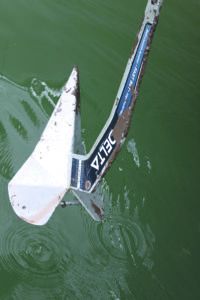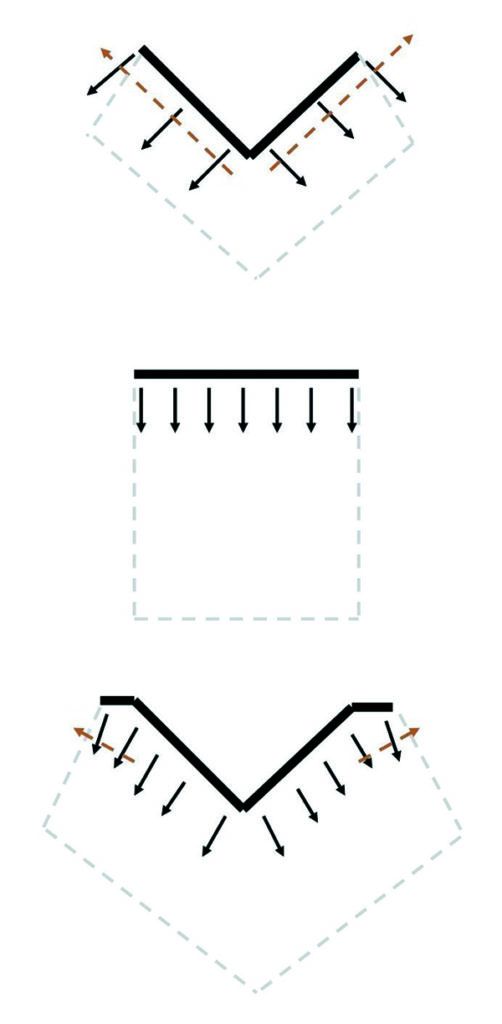The new anchoring myth making rounds on the internet is that a scoop shape is what makes an anchor hold. Though it seems logical, it is wrong. We understand that plow-shaped anchors have a reputation for, well, plowing, but there is more to consider. Today’s quick-setting convex anchors may look like your father’s plow, but there are important differences that set them apart. Perhaps some examples from climbing and construction anchors will help.
Snow and Ice Anchors

Firm snow and ice are stronger in compression than shear. An icicle will easily snap but won’t fail in compression until it literally melts. In the case of a climber’s ice screw, the optimum installation angle is counter intuitive. You would think you would screw it in at a slight upwards angle, like a picture hanger. In fact, testing has shown that ice screws installed with a 15 degree downwards angle are 50-percent stronger than ice screws with a 15 degree upwards angle. The ice screw threads, like the bumps on concrete rebar, are enough to keep the screw from sliding out.
Because a downward angled screw is levering inwards rather than outwards, more ice is place in compression and the shear plane is much larger. Of course, in wet, slushy ice the threads do not hold as well. However, like anchoring in poor mud, the screw won’t hold well anyway.
Soil and Snow Anchors

is compressed beyond the projected outline of the fluke, but much of it
slides off, reducing holding power.
Center. A flat plate or concave fluke
presses against the soil in front of it. The soil does not slide off, but the
sheer plane is limited to the area in front of the fluke.
Bottom. A flanged fluke pushes soil outward, increasing the sheer
plane area. The edge flange prevents
soil from sliding, which can lead to greater holding capacity than a flat or even a scoop-shaped fluke like a
Bruce design.
The same principles apply to the soil anchors we have on our boats. In theory, a slightly convex anchor will compress an area of soil that is larger than the projected fluke, so the shear plane it creates is larger than the one created by a comparably sized flat fluke (a Danforth, for example). Adding a flange on the edge of the convex fluke further expands the shear plane. With the right tweaks to the fluke surface, the ultimate holding capacity of a convex anchor can match the best concave anchors. However, the important differences are not in holding, which is very similar, but in how the anchor resets and stays clean (see PS February 2013, “Anchor Resetting Tests”).
We tested the theory by flipping over the fluke of a new concave design to create a broad convex fluke. Interestingly, our Franken-anchor held just as well as the original concave design, and it remained in place even better than a popular convex anchor, presumably because our modified anchor’s V was far less acute, and the soil did not quickly slide off the fluke.
PS Technical Editor Drew Frye is the author of “Rigging Modern Anchors.” He blogs at www.sail-delmarva.blogspot.com.








































Great explanation for why our Excel anchor holds so well, thanks! Any other anchors on the market that you know of with the flanged fluke?
The new Lewmar Epsilon has something like a flange. It also shares an odd mix of features from the Delta, Rocna, and Vulcan. We have not tested it’s performance and can offer no evaluation.